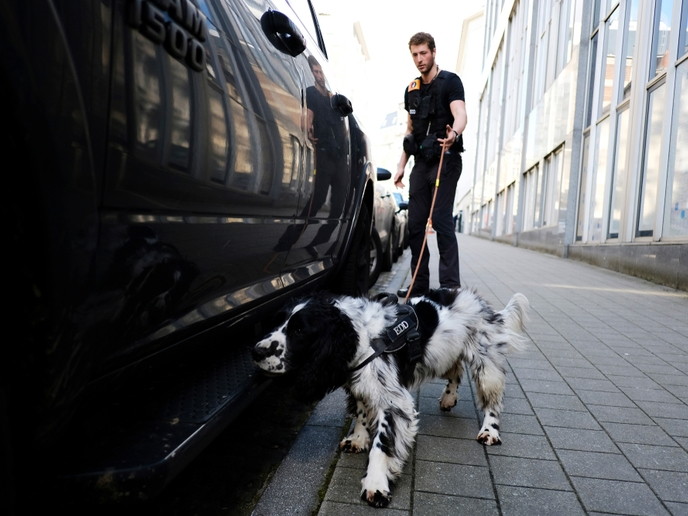New training system set to unleash a new generation of bomb dogs
Terrorism remains a genuine threat for Europeans, especially at large public gatherings and events. This means an increasing need for the systematic detection of explosives. Dogs are still the best way to achieve this. They are far more sensitive than any chemical detectors yet devised. Unlike machines, dogs are also agile, mobile and inexpensive to operate. However, given recent increase in demand for sniffer dogs, Europe now has a shortage. The necessary temperament cannot be trained, and for this reason most dogs fail the training. Even for suitable dogs, training is time consuming, labour intensive, and therefore expensive. Conventional training seems unlikely to meet Europe’s demand. The EU-funded IDT(opens in new window) project developed a new training system able to produce qualified dogs in the numbers needed. The system relies on a new portable odour recognition training device.
Box of secrets
The IntelliDog Trainer (IDT, for short) consists of a metal box, about the size of a coffee table, with seven holes on its upper surface. Under the holes are containers, each holding a substance, in a carousel. The containers randomly switch position inside the box. The dog must identify the container by sniffing the correct hole in a deliberate way. Success means a reward. “Dogs see the box as a toy that hands out cookies, so they are eager to work with the machine, and keep going back to it,” says project coordinator Dr Harry Knot. Trainers use a mobile phone app to set the number of correct holes, switching frequency and time to respond. In this way, trainers can also set the level of difficulty. Gradually, the quantities of the active substance can be reduced.
Improving productivity
Breeders can use the device to preselect puppies. Suitable dogs can be prepared for advanced training by the police or military. This improves training efficiency because unsuitable dogs are eliminated from the running at an early stage. The new training system also eliminates the 1:1 trainer-to-dog ratio that previously limited training capacity. Now trainers can train many suitable dogs at once. Furthermore, the IDT reduces dogs’ dependence on a single trainer or handler, and de-emphasises language commands. The advantage is that dogs from one country then become available to work in another, or with multiple handlers, which is not currently so. The system thus also introduces much-needed European standardisation. Researchers found it challenging to work with customers such as the police and military. “They are difficult to approach, and secretive about their normal practices,” says Dr Knot. “They also have extremely demanding requirements. For example, the military people told us, ‘we’ll drop it 10 times from 2 metres and it still needs to work’.” The IDT team has developed a very good working prototype, but will need another round of engineering to develop the product to meet such requirements. The training system can accommodate any odours for which dogs need training. Apart from explosives, this includes cash, drugs and other contraband, and toxins. As such, the eventual market will be considerably larger than that upon which IDT’s initial business plan was based, and not confined to the EU. IDT developments offer hope to countering threats of terrorism. The ability to economically and efficiently train enough dogs will help authorities keep European citizens safer.







